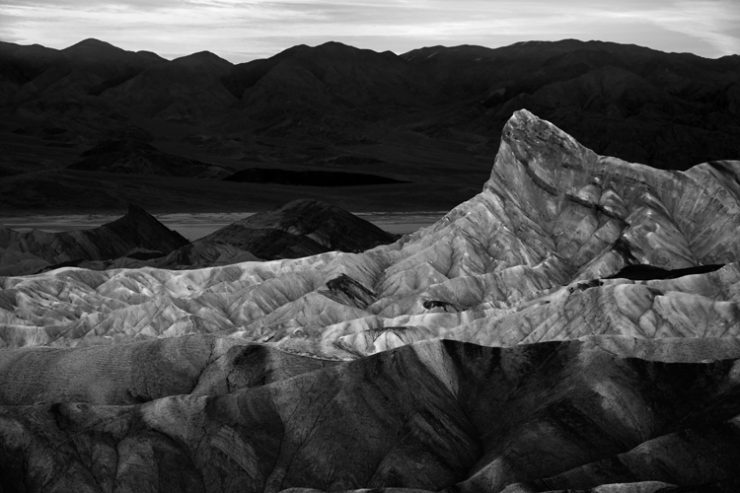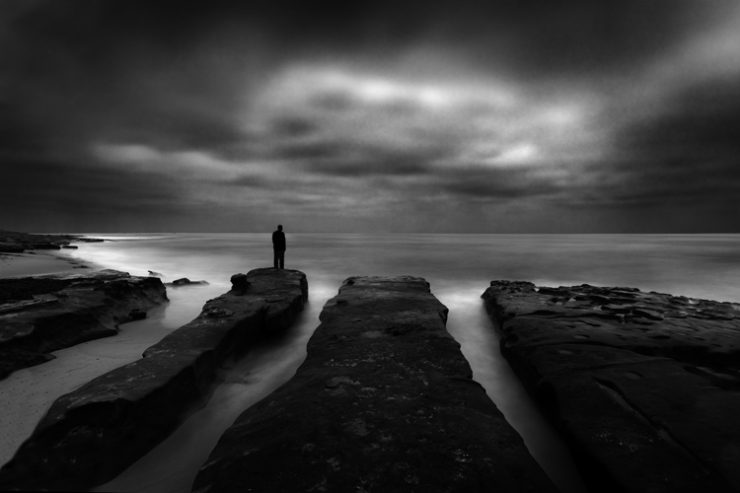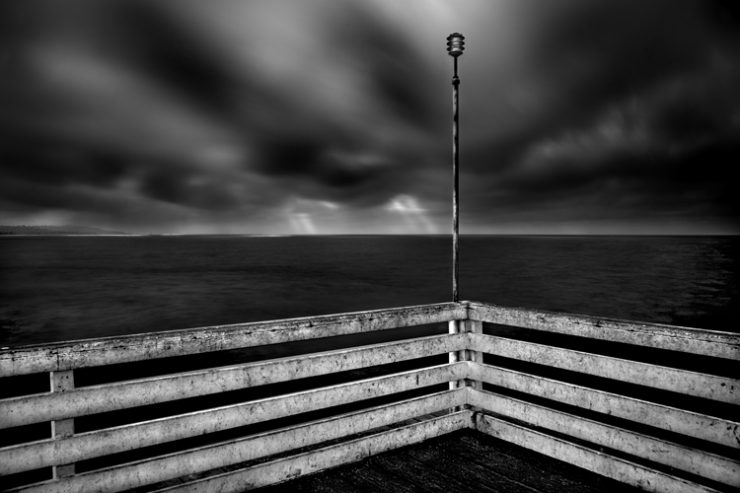MG: Right, and it wasn’t a bunch of tourists… these were people with thousands or tens of thousands of dollars worth of camera equipment.
Another thing that frustrates me is when people say “You should go to Place-X, it’s a great photo-op”, as though making a great image is nothing more than going to a spot and pressing the button. You wouldn’t say to a composer, for example, “Hey, I heard this piece of music on the radio today… write this down.”
Cole: Yeah, I had a guy tell me today that I should go to the spot where Ansel Adams shot the snake river and the Tetons, and he could show me where the spot was! And what happens if you go there and do it? Someone says, “Oh, that reminds me of an Ansel Adams shot,” and again, do we want to be imitators or innovators?
MG: Exactly. Getting back to the original question: do you think that our friends who claim that they’re not artistic ultimately can turn things around?
Cole: The problem with people who want to insist that they’re not creative and have no artistic ability is that until you start believing, you can’t start unearthing your talents. I really do believe that everybody has artistic ability, but for some of us, my case in particular, it’s buried super deep. With no exposure and no encouragement, you really feel completely lost. If you start believing that you’ve got it, though, it can be brought out. But you can’t insist that you have no creative ability, you just have to start going on faith, like I did. When people asked what I do, I’d say “I’m an artist”, and at first I felt like I was the great imposter…how dare I say that? It seemed so absurd that I would refer to myself as an artist. But after a while you start to believe it, you start living it, and it becomes true.
MG:You have a very dramatic, style… lots of strong lines and contrast, and usually dark images. Are there particular characteristics that you try to work into an image? Are there things that you look for when you’re out shooting?
Cole: Yes, most definitely. I look for the strong contrast, or a dark image where I can bring out a light subject, for example. I do a few images that are high-key, but I tend not to like those very much. But you can’t be all things. There are so many great images, and you say “Oh, why didn’t I see that?” Well, that’s not my style. So you end up passing by maybe a thousand scenes until you find one that fits you and your style. I think that that’s one of the dangers of looking at other photographers’ work. You see such a tremendous variety of styles and visions, and then you start wanting to be everything. And you can’t. My abilities are within this narrow range, and so I look for images that fit it… and in particular, contrast, I look for things that stand out, and my lines have been getting simpler over time, increasingly my images have gotten closer and with very simple lines.
MG: How did you get started with the business side of fine art photography? How did you get your name out there, promote your work, get your first publication, gallery show, and get recognition for your work and yourself?
Cole: Let me answer this from a different angle. When I was starting out, I never stopped and defined what success was, I just used the world’s definition, which tends to be money, publication, and fame. So I started down that path, but at some point, I said “What do I consider successful? What do I want to do? What would I be happy doing?” So I had to put the breaks on, redefine, and then pursue things using my definition. So what I tell everybody is… define for yourself what success would be; for some it’s X number of dollars per year in sales, for others its publishing a book, to be in LensWork, to be well regarded by my peers… whatever it is, stop and really ask that question.
For me, business and art don’t mix. If you think you’re going to become rich by selling art, I think that’s probably a fantasy, because very few make a lot of money. Often to make money, you have to compromise and end up doing something you don’t love. For me, art is doing what I love, regardless of whether it sells or not, regardless of whether it’s published, regardless of whether anyone else likes it.It’s not other people’s definition that makes my art successful, it’s my definition… doing what I love and enjoying it.
But if you want to be published, and if you want to get yourself out there, I started with juried shows. There’s a million of them now. Here in town, there’s the Center for Fine Arts, there’s Woodstock, Sante Fe, lots of galleries now have juried exhibitions. Then there are blogs, your own and others, I do a lot of YouTube videos which gives me exposure, and I do a lot of my own SEO to bring traffic into my site. You can approach galleries, but I don’t… I’ll exhibit almost anywhere, but my one rule of thumb is that they have to approach me and say “I love your work, can we show it here?” I don’t go asking people if I can show my work there.
It also helps just to get to know people; you can go to Review Sante Fe, or Fotofest, you can do things like that, but primarily the generally accepted path is to build a resume and that means getting into juried shows. And then from there, a lot of magazines will approach you, and that gets the ball rolling. It’s exposure.
I think the thing that I’ve really learned the most is that you have to define what success is for you, and don’t be pursuing other people’s dreams, or other people’s visions, really make your art your own and do it for whatever will bring you the most fulfillment. If I can simply pay for my equipment and paper and ink, I’m happy as a pig… I really am.
Coming Up Next
In the next installment of this conversation with Cole Thompson, we’ll discuss the techniques and stories behind his most iconic images. We’ll also briefly cover his digital workflow, and his equipment. It is now available here: Creating the Image : A Continued Discussion with Cole Thompson.






